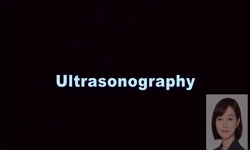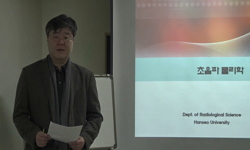The monitoring and management of osteoporosis have a matter of primary concern and interest in a filed of medical diagnosis recently. The bone density measurement using ultrasound is low cost device providing information about both bone density and...
http://chineseinput.net/에서 pinyin(병음)방식으로 중국어를 변환할 수 있습니다.
변환된 중국어를 복사하여 사용하시면 됩니다.
- 中文 을 입력하시려면 zhongwen을 입력하시고 space를누르시면됩니다.
- 北京 을 입력하시려면 beijing을 입력하시고 space를 누르시면 됩니다.
https://www.riss.kr/link?id=T8421893
- 저자
-
발행사항
서울 : 건국대학교 대학원, 2000
- 학위논문사항
-
발행연도
2000
-
작성언어
한국어
- 주제어
-
KDC
569.9 판사항(4)
-
발행국(도시)
서울
-
형태사항
vi, 47p. ; 26cm .
- 소장기관
-
0
상세조회 -
0
다운로드
부가정보
다국어 초록 (Multilingual Abstract)
The bone density measurement using ultrasound is low cost device providing information about both bone density and structure but it is not generate ionizing radiation for diagnosis of osteoporosis.
According to the clinical research, it has been known that QUS(quantitative ultrasonography) is closely related to bone mineral density. especially, it has shown excellent performance for distinguishing osteoporosis from non-osteoporosis.
Although the actual market demand of ultrasonic diagnostic tool for osteoporosis in Korea has increased rapidly in recent days, the aggregate market demand is still absolutely depending on import because not localized yet in Korea.
That's major reason why we have developed Ultrasound Bone Densitometry.
Usually the ultrasound system uses two factors that SOS(speed of sound) and BUA(broadband ultrasound attenuation). the BUA and SOS, both are determined by bone mineral density and bone structure, and they are contrary to each other yet in temperature around transducer.
For example, when the temperature rise, SOS has decreased but BUA has increased.
To talk out the advantage of this property, we make a BQI(bone quality index), which is a measurement factor to compensate the error caused by changing of temperature change. and we achieve reference data(n=97) from several group with different area and environment in Korea.
From the results, the CV(coefficient of variation) of BUA is 2.4%, SOS is 0.2%, and BQI is 1.7%. and the correlation coefficient between BQI index results(T-score) and Os Calcis BMD(bone mineral density) obtained by dual energy X-ray absorptiometry method is 0.793.(n=19)
The monitoring and management of osteoporosis have a matter of primary concern and interest in a filed of medical diagnosis recently.
The bone density measurement using ultrasound is low cost device providing information about both bone density and structure but it is not generate ionizing radiation for diagnosis of osteoporosis.
According to the clinical research, it has been known that QUS(quantitative ultrasonography) is closely related to bone mineral density. especially, it has shown excellent performance for distinguishing osteoporosis from non-osteoporosis.
Although the actual market demand of ultrasonic diagnostic tool for osteoporosis in Korea has increased rapidly in recent days, the aggregate market demand is still absolutely depending on import because not localized yet in Korea.
That's major reason why we have developed Ultrasound Bone Densitometry.
Usually the ultrasound system uses two factors that SOS(speed of sound) and BUA(broadband ultrasound attenuation). the BUA and SOS, both are determined by bone mineral density and bone structure, and they are contrary to each other yet in temperature around transducer.
For example, when the temperature rise, SOS has decreased but BUA has increased.
To talk out the advantage of this property, we make a BQI(bone quality index), which is a measurement factor to compensate the error caused by changing of temperature change. and we achieve reference data(n=97) from several group with different area and environment in Korea.
From the results, the CV(coefficient of variation) of BUA is 2.4%, SOS is 0.2%, and BQI is 1.7%. and the correlation coefficient between BQI index results(T-score) and Os Calcis BMD(bone mineral density) obtained by dual energy X-ray absorptiometry method is 0.793.(n=19)
목차 (Table of Contents)
- 제 1 장 서론 = 1
- 제 2 장 골밀도 측정 방법의 종류 = 3
- 제 3 장 초음파 골밀도 측정 알고리즘 = 7
- 3.1 골의 형태와 구성 = 9
- 3.2 SOS(speed of sound) = 11
- 제 1 장 서론 = 1
- 제 2 장 골밀도 측정 방법의 종류 = 3
- 제 3 장 초음파 골밀도 측정 알고리즘 = 7
- 3.1 골의 형태와 구성 = 9
- 3.2 SOS(speed of sound) = 11
- 3.3 BUA(broadband ultrasound attenuation) = 14
- 3.4 BQI(bone quality index) = 18
- 3.5 골다공증 진단 기준 = 19
- 3.6 선형 적합(line fitting) = 20
- 3.7 상대 정밀 오차(relative precision errors) = 22
- 3.8 상관 관계 분석 = 25
- 제 4 장 실험방법 = 28
- 4.1 하드웨어 = 28
- 4.1.1 초음파 골밀도 측정 장치의 기본 구성 = 28
- 4.1.2 탐촉자 = 29
- 4.1.3 진단기 외관 = 31
- 4.2 소프트웨어 = 32
- 제 5 장 실험결과 = 35
- 제 6 장 성능평가 = 43
- 제 7 장 결론 = 45
- 參考文獻 = 46












